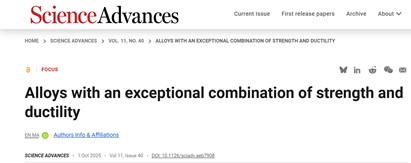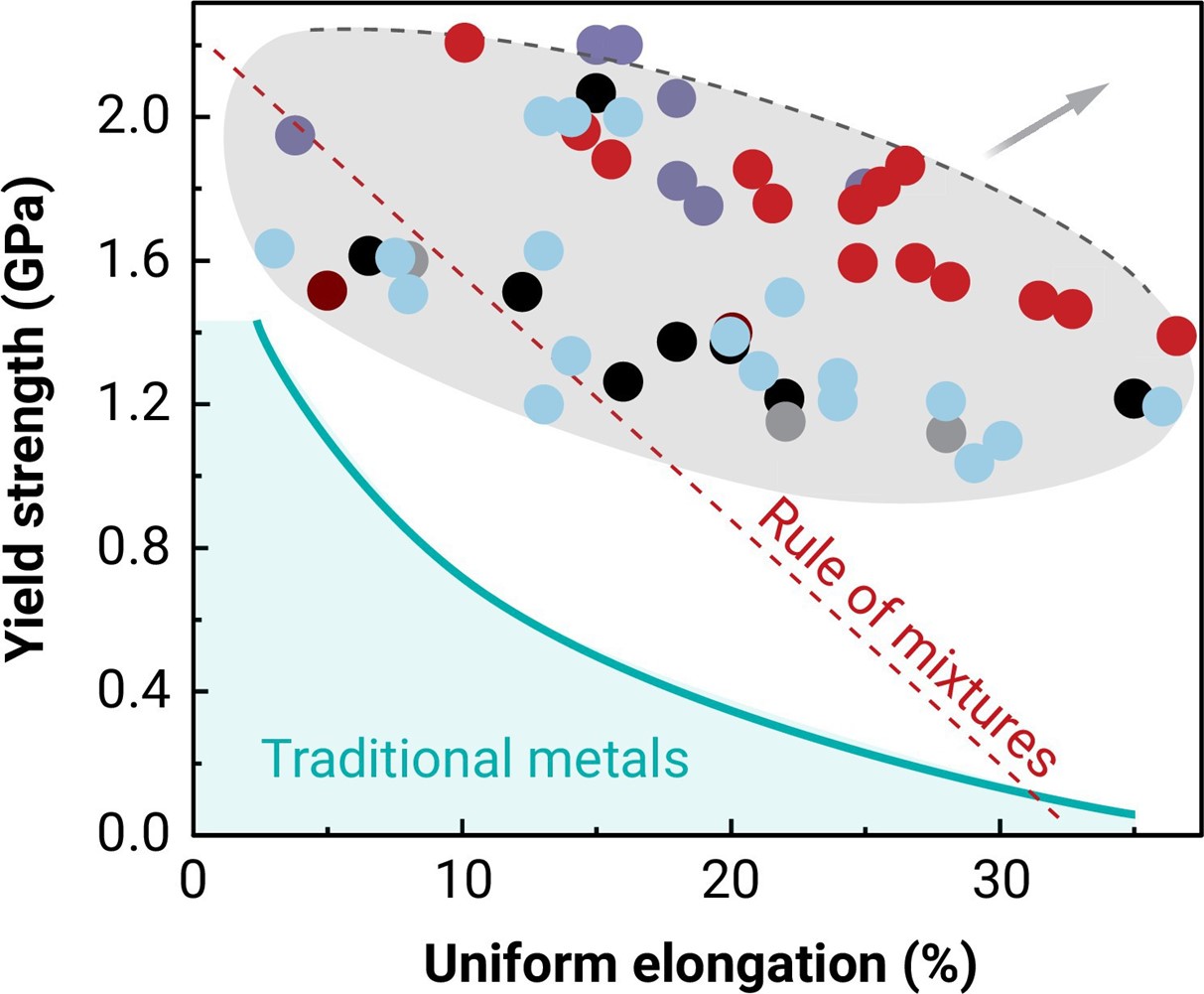The yield strength and tensile plasticity of metallic materials are crucial for engineering applications. High strength can meet load-bearing requirements and significantly reduce material usage, thereby conserving energy and lowering emissions. High plasticity enhances the safety of materials during service, and its most important engineering significance lies in the ability for uniform deformation under tensile stress, which is often essential for material processing. However, a significant increase in yield strength is almost always accompanied by a loss in tensile plasticity. Therefore, achieving both high strength and high plasticity simultaneously has long been a goal pursued by materials scientists.

Recently, Professor En Ma from State Key Laboratory for Mechanical Behavior of Materials at Xi'an Jiaotong University published a Focus article titled “Alloys with an Exceptional Combination of Strength and Ductility” in Science Advances, a sister journal of Science. The article demonstrates the feasibility of maintaining tensile plasticity while enhancing the strength of metallic materials, thereby achieving the coexistence of high strength and high plasticity. The article highlights that, within the performance range shown in Figure 1, the primary reason for the limited tensile ductility at high strength is often plastic instability—particularly necking. The key academic concept for achieving both high strength and high plasticity is based on the following principle: by introducing effective obstacles along dislocation motion paths, dislocations are hindered, thereby achieving high strength. At the same time, these frequent obstacles increase dislocation reactions and storage opportunities, maintain the strain hardening rate, and suppress plastic instability (necking), thus extending tensile ductility.

Figure 1: Alloys with Ultra-High Yield Strength and Large Uniform Tensile Ductility.
Recent research has surpassed the previous limits (not much above the red dashed line) by maintaining a high strain hardening rate while enhancing yield strength, thereby preserving uniform elongation. The current research frontier (upper bound, gray dashed line) is approaching the top-right corner (gray arrow). Notable examples include ultra-high-strength steels (purple) and multi-principal element alloys (latest data in red, previous years’ data in other colors), such as Fe-Mn-C-Al-Si-V, W-Ni-Fe-Ta, Ti-V-Nb-Hf-Al, Fe-Co-Ni-Al-Ta, and V-Co-Ni (gray region).
Image credit: En Ma, Chang Liu; adapted by A. Fisher/Science Advances.
The design practices guided by these principles have recently benefitted from the emergence of multi-principal element alloys. The expanded compositional space of these new alloys, which incorporate a variety of high-concentration alloying elements, allows traditional strengthening and strain hardening mechanisms to be fully utilized. At the same time, the complex and nano-scale heterogeneous microstructures—characterized by structural and chemical inhomogeneities, including compositional fluctuations and chemical ordering—along with an unusually high population of nanoprecipitates, introduce new mechanisms for controlling dislocation evolution. The combination and utilization of these mechanisms result in effects that simple alloy systems cannot achieve. Within the known performance range of conventional bulk-sized metals and alloys at room temperature (yield strength around 2.3 GPa, uniform elongation around 30%), the newly developed alloys are approaching the long-sought goal of achieving both "high strength and high plasticity" at the same time (top-right corner), which combines "the best of both worlds."
The perspectives and discussions presented in the article aim to provide new insights and approaches for addressing the strength-ductility trade-off challenge. The latest successful cases (Figure 1) offer new possibilities and opportunities for the development of metallic materials. However, further engineering design efforts are needed to focus on the behavior of these alloys under various complex loading conditions, such as fatigue, fracture toughness, and processing performance under triaxial stress states.
Paper link: https://www.science.org/doi/10.1126/sciadv.aeb7908


